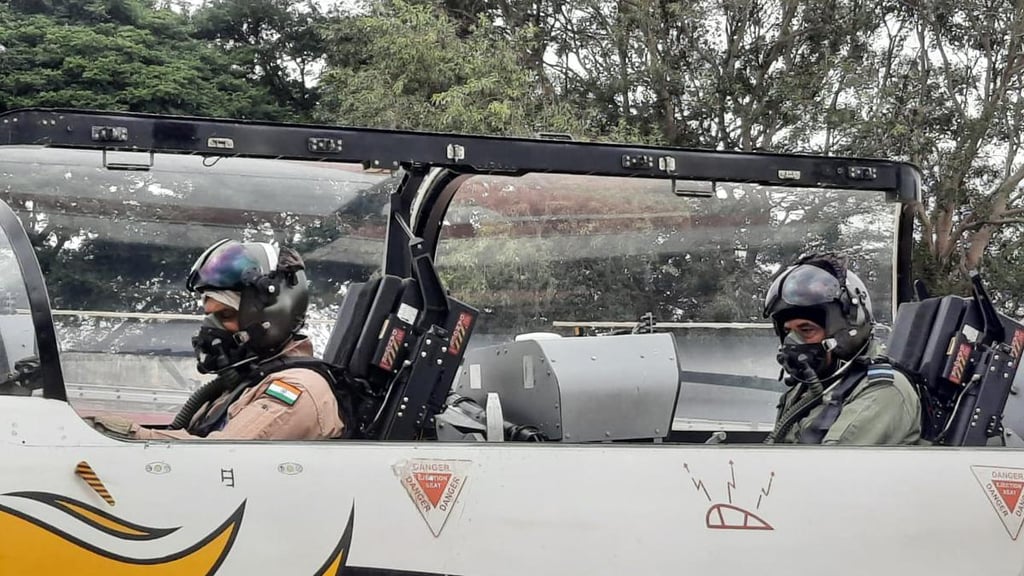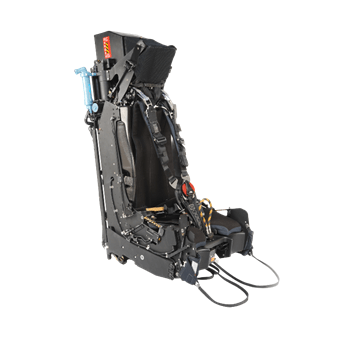HAL to Indigenize Ejection Seat for HTT-40 Basic Trainer Aircraft
NEWS
Durgesh Singh
7/31/20243 min read


HAL has released an RFI in which they are inviting responses from eligible Companies with manufacturing facilities in India for the indigenisation of Ejection Seats for use in HTT40 Turbo Trainer Aircraft with a minimum indigenous content of 50%. Ejection seats may be developed in the form of lower assemblies / sub-assemblies herein after being termed as Shop Replaceable Units (SRUs)
HTT-40 turbo is a low wing, two-seater (tandem) trainer aircraft used for basic flying training role. The maximum speed of the aircraft is 450 kmph at sea level. The aircraft is operable at normal acceleration of +6g and -3g in the normal training configuration. The HTT-40 shall be capable of stall, spin and the complete aerobatic profile. The sortie profiles expected to be flown would be general handling, Instrument flying Navigation, Night flying and close formation. An ejection seat is an explosive powered life saving device to provide the safe and reliable means for the pilot to abandon the aircraft in the shortest possible time to save pilot when the aircraft is in emergency situation. The ejection seat comprises a telescopic gun, harness system, parachute deployment system, rocket pack, survival pack etc. The likely requirement of the SRUs is enclosed at E-1. The Ejection seat shall be designed and fabricated as per relevant MIL Standards or as per approved aircraft standards of country of origin. In case the ejection seat conforms to standards other than the MIL Standards, then the detail of the standard should be provided for the assessment and consideration of acceptance by concerned certification authority. HAL shall extend all necessary handholding/support during the development of the project.
Ejection Seat:
The basic requirement of Ejection seat are as follows:
1.1 The ejection seat shall be of light weight state of art fully automatic, cartridge operated rocket assisted off the shelf Zero-Zero category seat requiring minimum effort for its integration with HTT-40 aircraft.
1.2 The ejection shall provide fully automated survivable escape for all aircrew members within the percentile accommodation limits and over the escape performance envelope specified.
1.3 The ejection seat shall provide operational reliability, low maintenance, good comfort, ease of adjustment, simplicity, durability and low weight.
1.4 The ejection seat shall provide the crewmember with comfortable accommodation during normal flight operations and shall furnish them with reliable means for escape from the air vehicle in case of emergency. Following initiation of seat ejection, the seat system shall provide an automatic sequence of actions to assure escape and recovery of the crew member, including seat/man separation and survival kit.
1.5 The ejection seat shall have the following features;
• Centre type seat firing handle.
• Seat height adjustment by electrical actuator operating on 28V DC.
• Single point combined harness.
• Powered automatic harness retraction for body restraint during ejection. • An effective leg restraint system attached to seat with/without direct attachment to the pilot has to provided.
• Thigh guards have to be provided.
• Redundant automatic operating features in case of failure of critical system.
• Safety feature to operating features in case of failure of critical systems.
• Safety features to prevent inadvertent ejections in air/on ground have to be provided for adequate safety for flight and ground crew during normal operations of the aircraft.
• Provide for pitch/yaw stabilisation.
• Assure consistent and positive operation of the parachute for opening and snatch loads within acceptable tolerance and or comfortable descent rate.
• The seat components are also to be stressed to withstand air pressure loads, thrusts and pyrotechnic gas loads appropriate to at least 1.5 times the maximum possible actual load.


Performance
* The ejection seat shall be of the Zero-Zero category and shall in general, conform to the requirements of the latest military standard MIL-S-18471G(AS)
* The ejection seat shall ensure safe and reliable escape from the disabled aircraft throughout the speed range from 0 to 475 KMPH
* The ejection seat shall meet the low-level escape performance requirements as specified in MIL-S-9479C(USAF)
*The seat trajectory shall clear the aircraft fin in all cases within the escape envelope.
*G-Load: The G-forces experienced by a minimum weight crewmember during ejection by the propulsion system shall not exceed the following values:
i. The Gz acceleration parallel to the crew member spine shall not exceed 18g’s measured over 0.02 second
ii. The rate of rise of Gz acceleration parallel to the crewmember spine shall not exceed 250g/sec measured over 0.05 seconds.
iii. The Dynamic Response Index shall be less than 18. The ejection seat shall provide safe ejection capability during emergencies in take-off and landing phases, even when the aircraft is operating from high altitude runways up to an elevation of 11000 ft AMSL.
